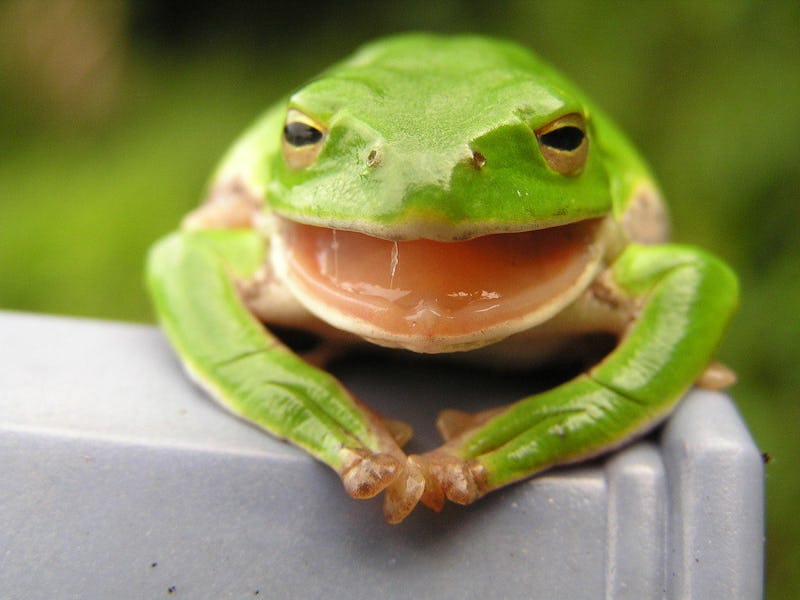Frogs Have Tongues That Unfurl Like Bubble Tape
The mucus-covered roll that can lift a rat.

Remember Bubble Tape, you children of the ‘90s, six feet of gum rolled up in a puck that was for you and not them? Bubble Tape may have died out on the T-ball fields, but its pink unfurling beauty lives on in the tongues of frogs:
Thomas Kleinteich and Stanislav N. Gorb, biomechanics experts at Kiel University in Germany, recently analyzed the way frog tongues move. They fooled three adult horned frogs into trying to snag a cricket, which was actually kept behind a glass plate, and filmed the animal’s offensive maneuvers in slow-motion. Using a combination of these video recordings and scanning the micro-anatomies of the frogs, the scientists were able to decipher the interplay of muscular movements and the little, pressure-sensitive sticky bits, called papillae, on the end of the frogs’ tongues.
As they reported in Royal Society Open Science on Thursday, a frog’s tongue floops out of its mouth like a falling wave, curving over the prey in a fraction of a second. But, when retracting the target into the frog’s mouth, the lingual muscles fold back perpendicularly to the surface. The perpendicular motion means the tongue can pull with proportionally higher force. Big frogs, when they feed, have to be capable of hefting rodents off the ground, the authors note.
It’s a pretty marvelous biological change; “the tongue appeared very flexible and deforms notably during impact and retraction, thus it might be best compared with a water-filled balloon.”